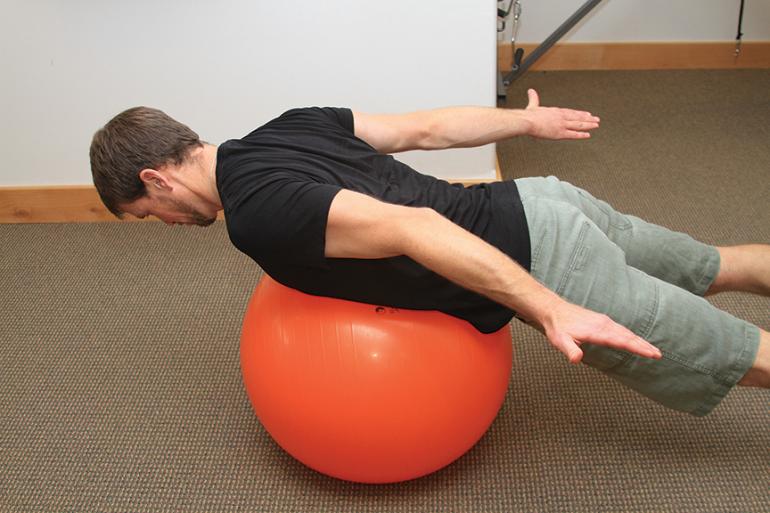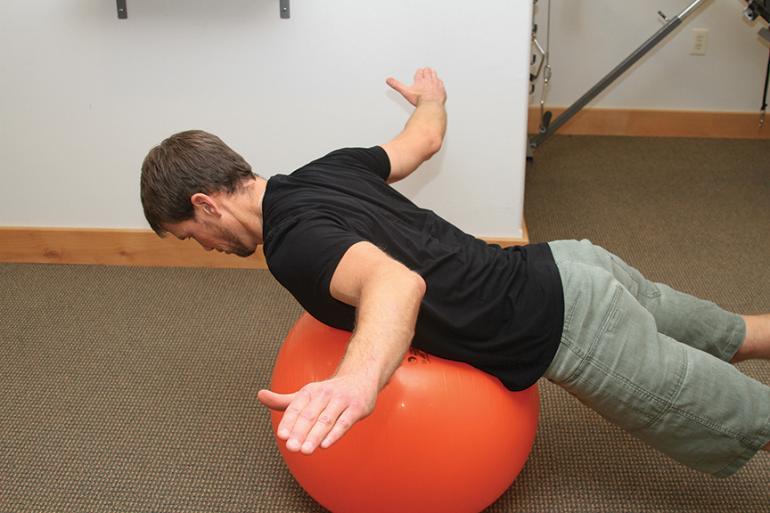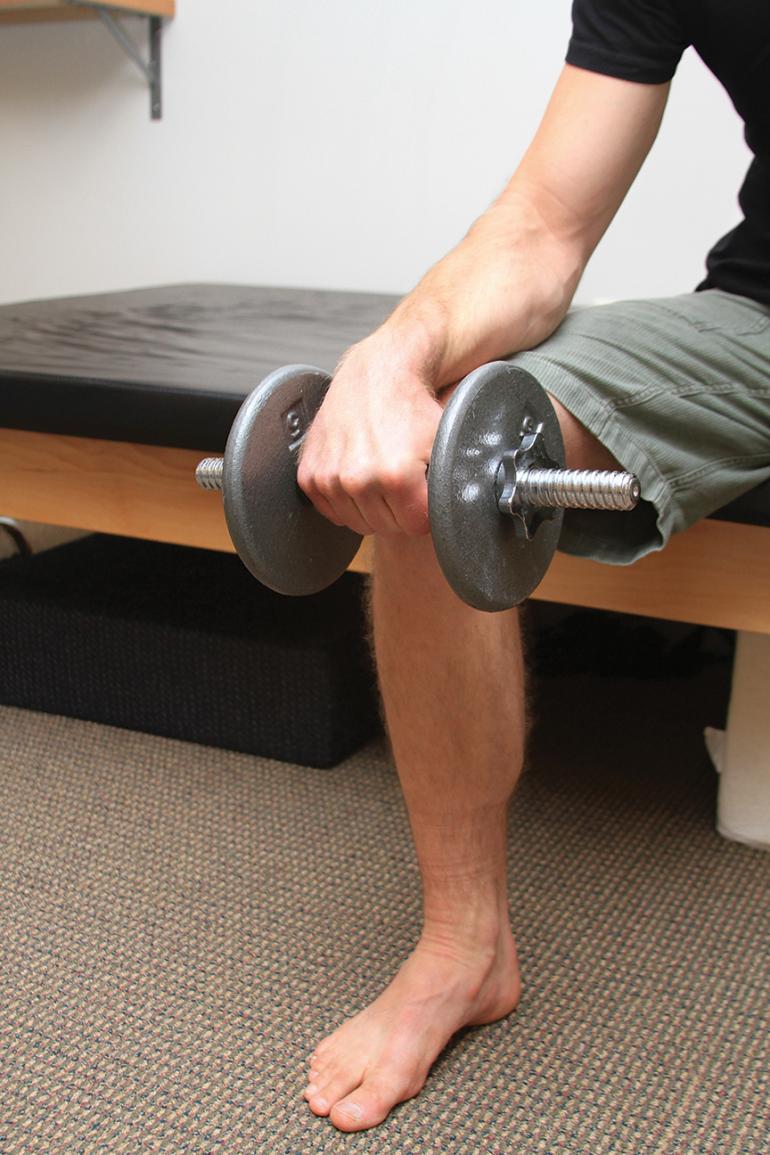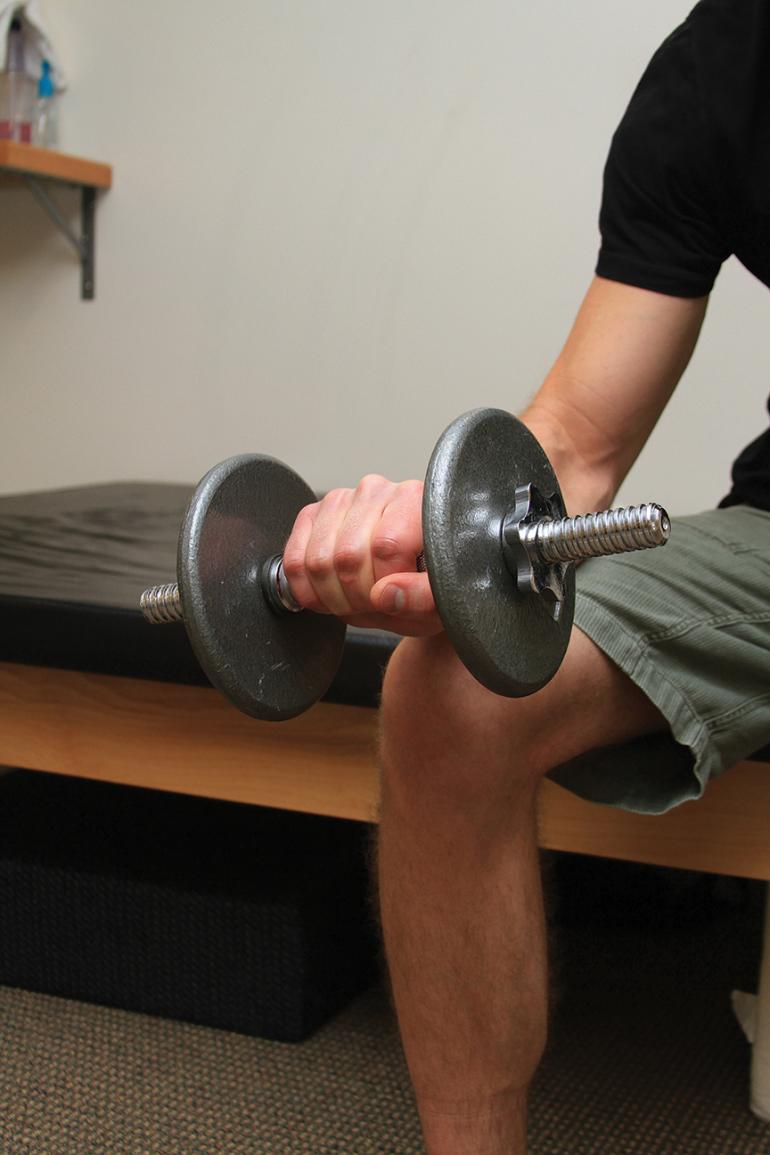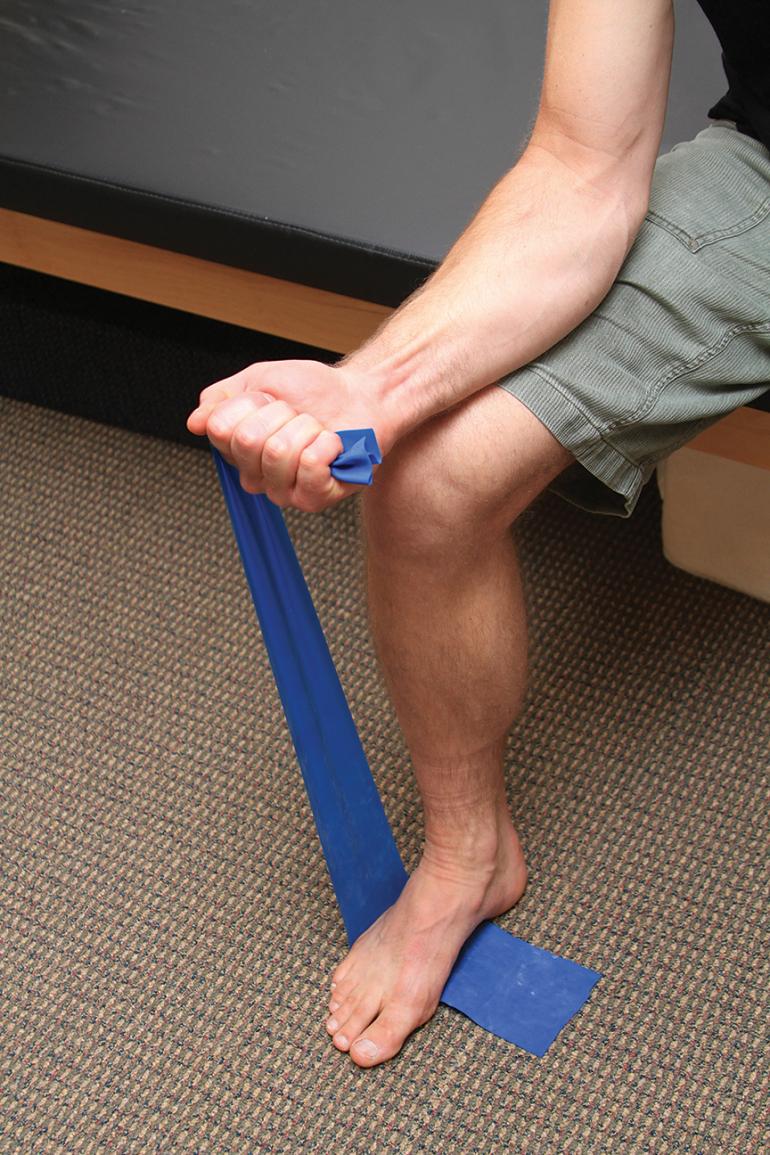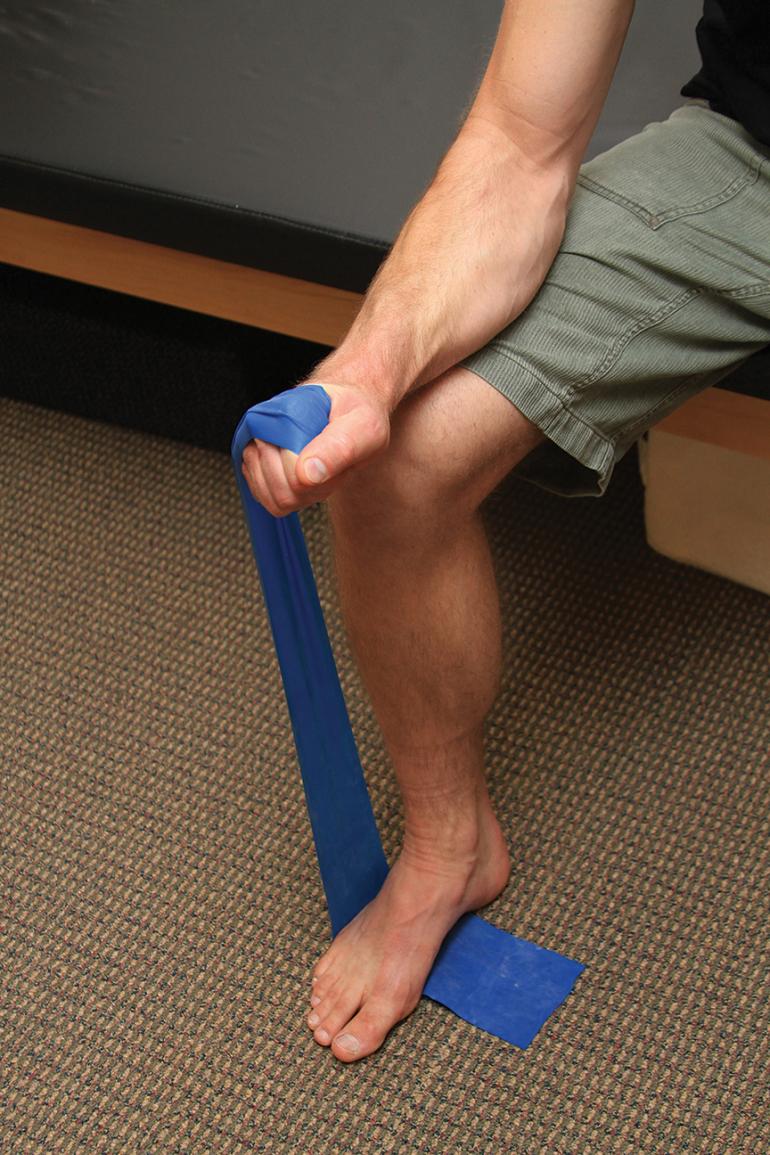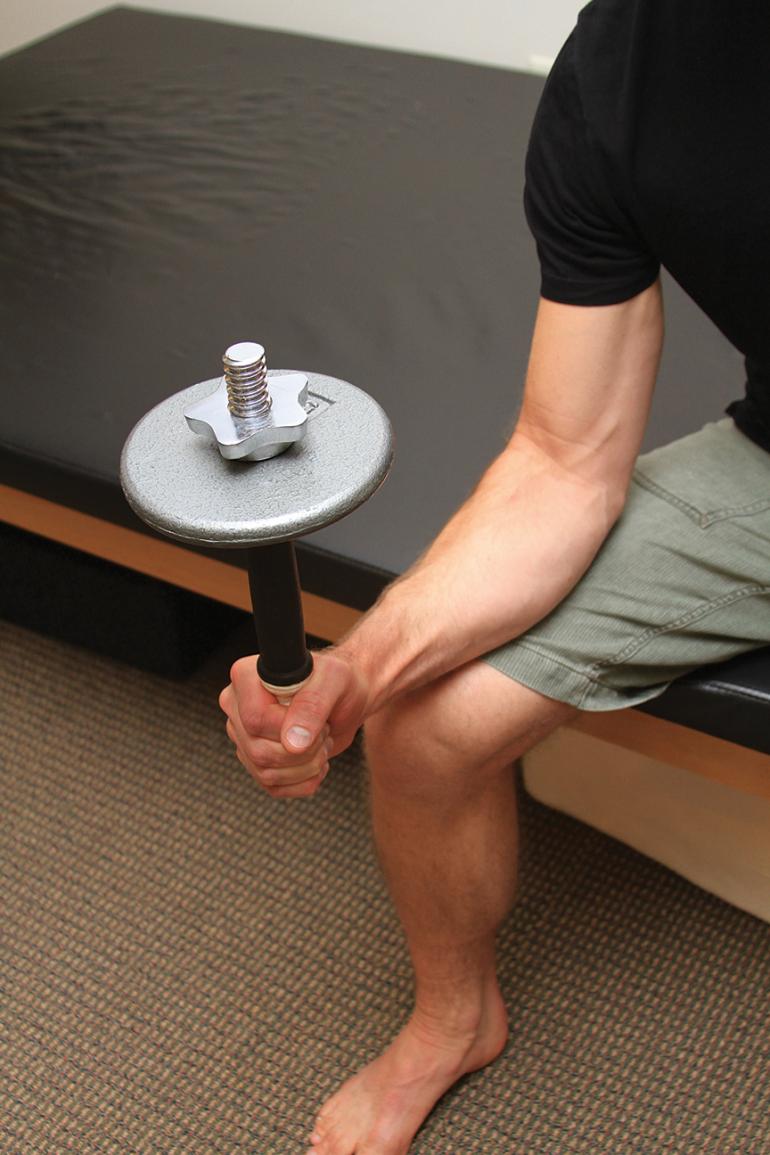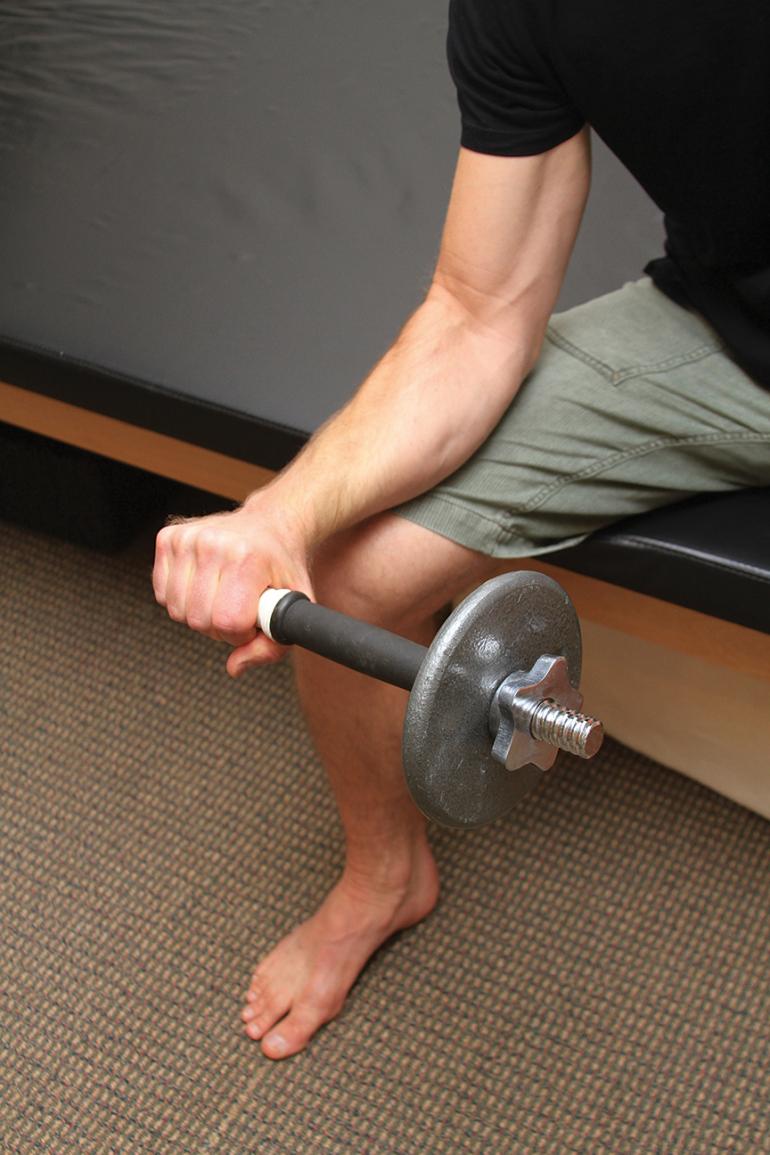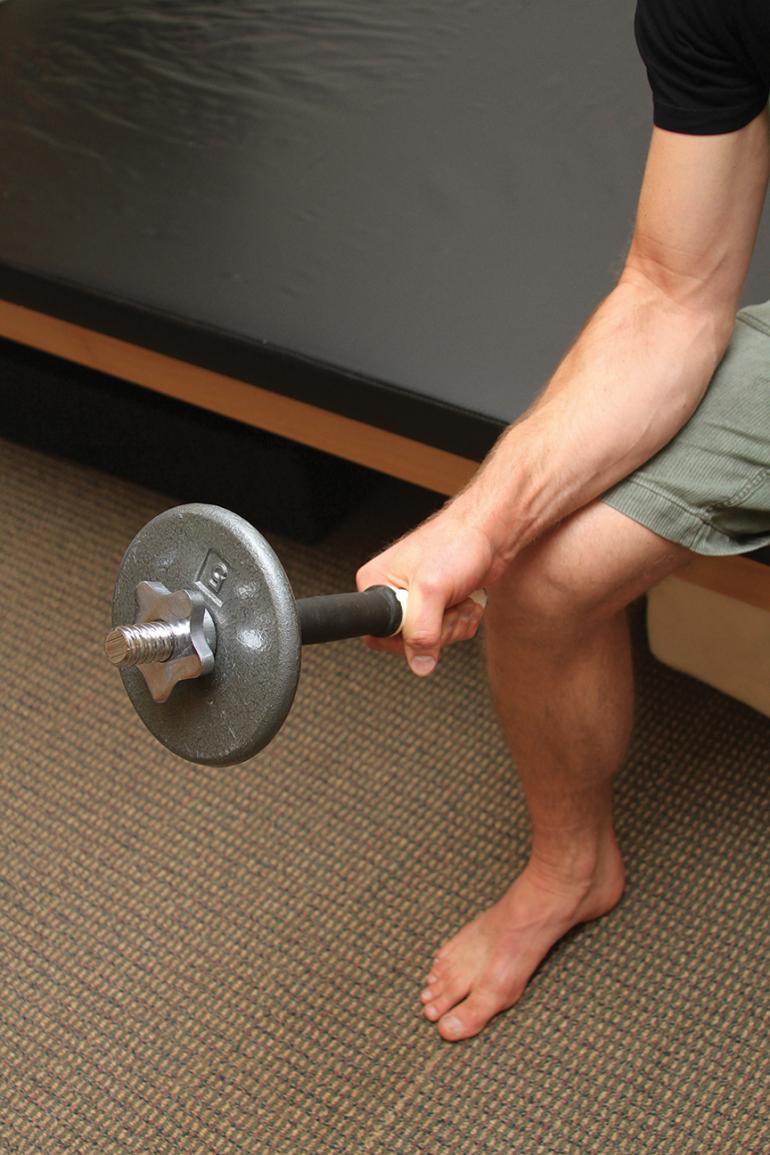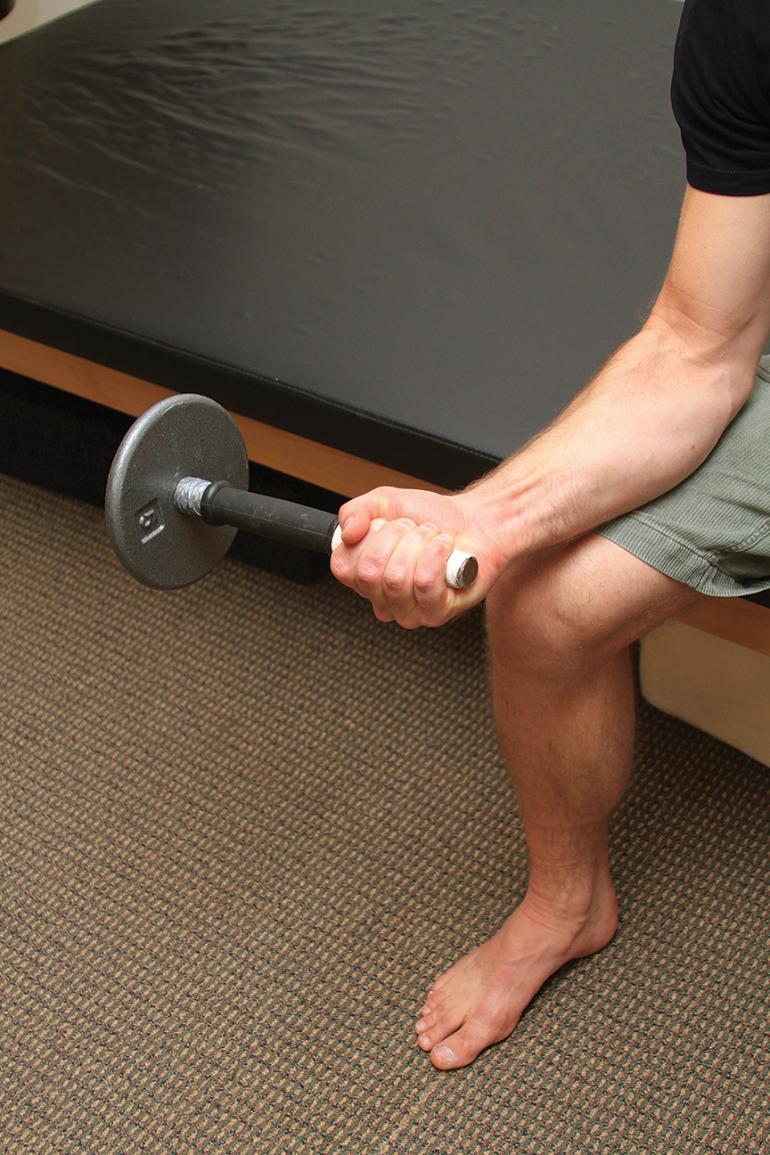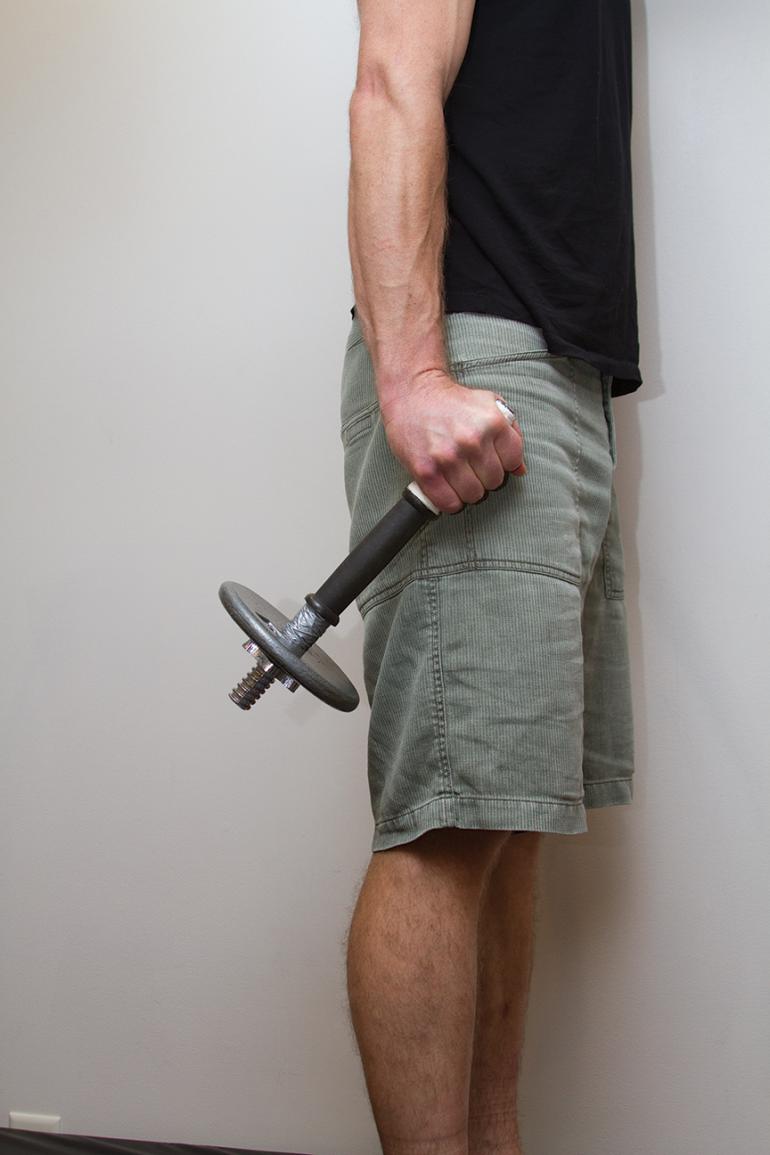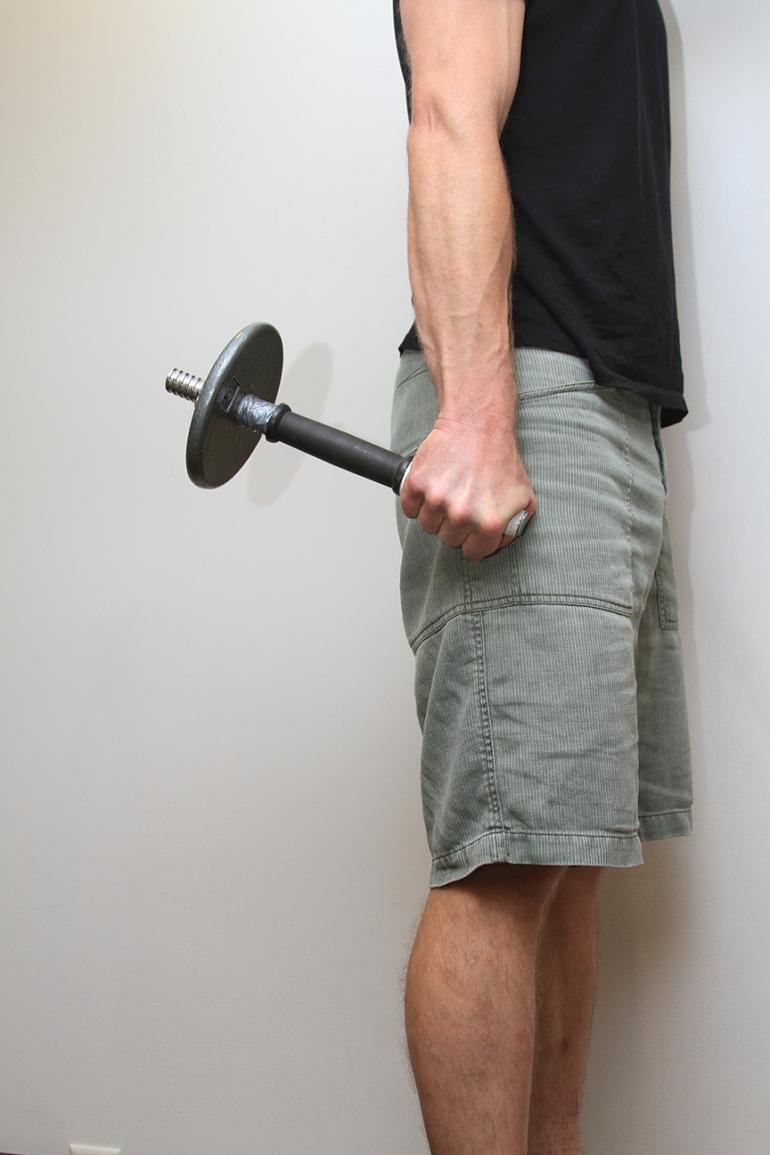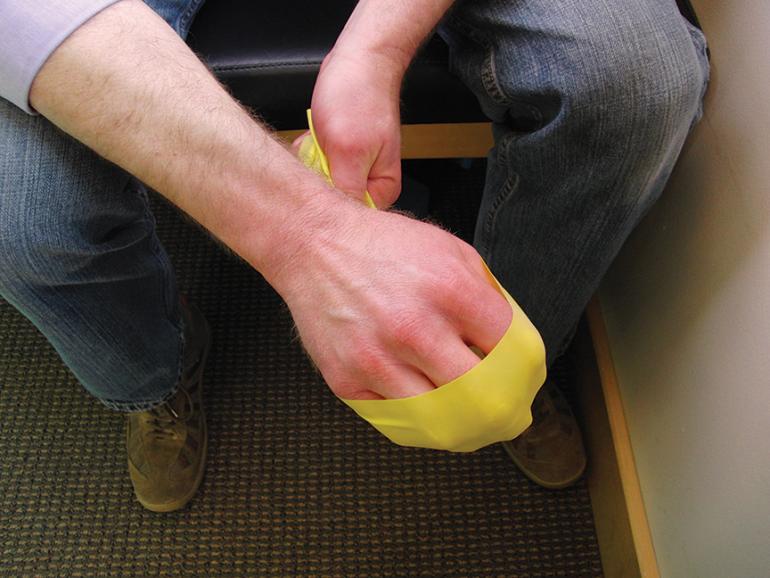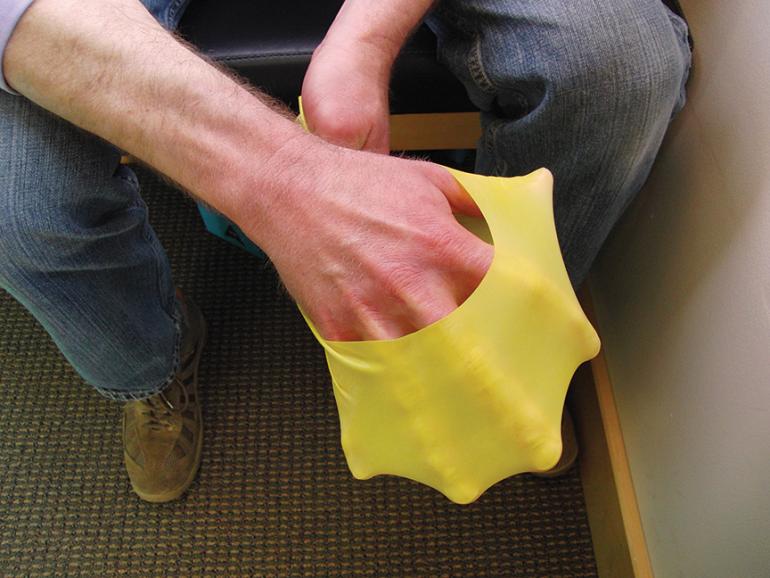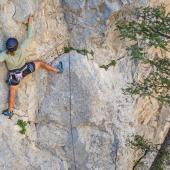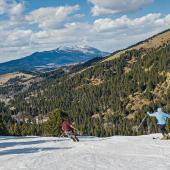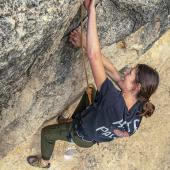Rock Hard
Spring exercises for climbing.
While some of us are still hoping to get in as much spring skiing as possible, the season is changing and the thought of warm days and dry rock is enticing. This is the time of year when climbers realize that winter has taken a toll, and it’s time to grow our forearms again. It’s also when we’re at an increased risk of injury due to de-conditioning. So how can you make this your strongest season yet, red-point last year’s projects, and move on to new objectives? To get started, let’s review some well-documented training concepts, like the “4-3-2-1 concept” developed by Erik Hörst in his book Conditioning for Climbers.
Four weeks of endurance training: rack up as much mileage below your highest on-sight grade as possible. Shoot for three to four days a week of rope climbing on a variety of rock types.
Three weeks of power training. Head to Spire and spend those rainy May days bouldering. Complement this with hang-board training, systems training, or campus training.
Two weeks of anaerobic training. This is maximum-intensity training over short periods of time with equivalent rest time. For example, climb four boulder problems (or roped pitches) consecutively without rest, then rest for the same duration of time. Repeat to fatigue. This will increase your ability to dig deep in situations where rest is not an option.
One week of rest at the end of this 10-week cycle is vital for proper tissue healing and an injury-free season.
Additionally, antagonist training provides muscular balance without adding mass where it’s not useful. We do a lot of pulling in climbing so go push on something—high repetitions of push-ups and shoulder presses are good. Strengthening forearms is important for the stabilization of the elbows and wrists. Try the following exercises:
Wrist Extension
Forearm flat on thigh, hold dumbbell with wrist flexed. Bend wrist up (extend) to feel muscle activation on top of forearm. Lower and repeat.
Pronation
Forearm flat on thigh, secure band with foot tracking band to outside of hand, palm up. Rotate palm downward feeling muscles inside of forearm, slowly return to start. Repeat.
Supination
Forearm flat on thigh, lower slowly toward opposite knee, return to start position feeling burn in extensors in each direction. Repeat.
Radial Deviation
Forearm flat on thigh, lower slowly in casting motion, return to start position feeling burn in top of forearm. Repeat.
Ulnar Deviation
Arm straight at side, weight facing back, perform casting motion back, slowly raising weight to feel burn in back of forearm. Slowly lower and repeat.
Finger Extension
Theraband (or rubber band) around fingers with fingers bent. Straighten fingers and thumb and pull out and up. Hold for five seconds, return to bent finger position and repeat.
Shoulder Stabilization
Shoulder stabilization is also key. Extensive research confirms the benefits of scapular and rotator-cuff stabilization for overhead athletes. In climbing, we spend a lot of time with our hands overhead pulling on holds in awkward postures. Try the pictured exercizes to protect your shoulders and prevent overuse injuries this season.
Core Strengthening
All climbers benefit from core strengthening regardless of ability. Emphasize more static exercizes, like plank and side-plank, as these aare more specific to our sport than crunches.
Do these exercises three times a week until you are climbing regularly, then cut back to once or twice a week for the remainder of the year to reduce the risk of elbow tendinopathies, wrist injuries, and finger injuries.
While just getting out and climbing is way more fun than training, being able to climb is also way more fun than being injured. “Roctober” is many months away, so tune your machine this spring and have an injury-free season.
Matt Heyliger, DPT is a physical therapist at Excel Physical Therapy.

